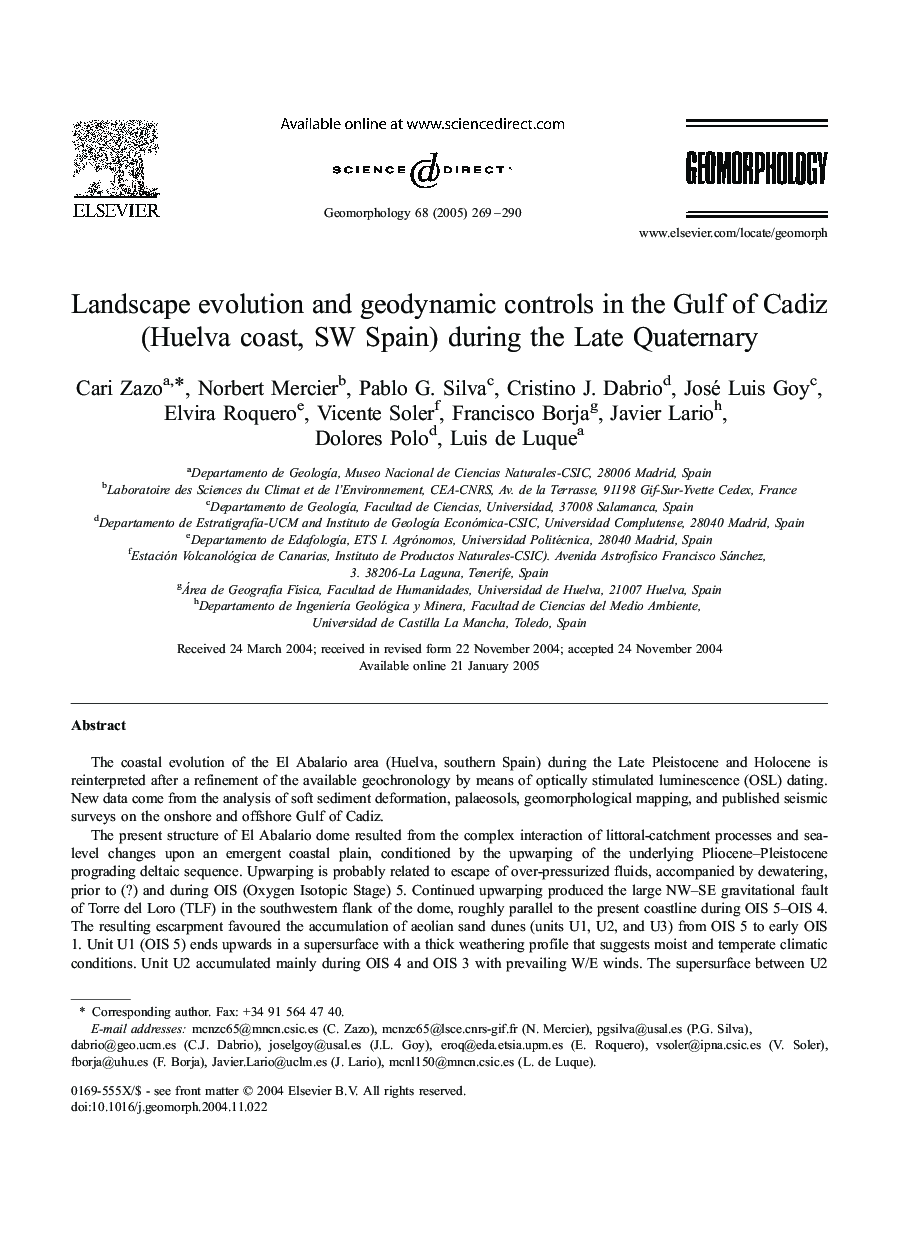| Article ID | Journal | Published Year | Pages | File Type |
|---|---|---|---|---|
| 9524891 | Geomorphology | 2005 | 22 Pages |
Abstract
The present structure of El Abalario dome resulted from the complex interaction of littoral-catchment processes and sea-level changes upon an emergent coastal plain, conditioned by the upwarping of the underlying Pliocene-Pleistocene prograding deltaic sequence. Upwarping is probably related to escape of over-pressurized fluids, accompanied by dewatering, prior to (?) and during OIS (Oxygen Isotopic Stage) 5. Continued upwarping produced the large NW-SE gravitational fault of Torre del Loro (TLF) in the southwestern flank of the dome, roughly parallel to the present coastline during OIS 5-OIS 4. The resulting escarpment favoured the accumulation of aeolian sand dunes (units U1, U2, and U3) from OIS 5 to early OIS 1. Unit U1 (OIS 5) ends upwards in a supersurface with a thick weathering profile that suggests moist and temperate climatic conditions. Unit U2 accumulated mainly during OIS 4 and OIS 3 with prevailing W/E winds. The supersurface between U2 and U3 records a part of OIS 2, with relative low sea level. Sedimentation of unit U3 took place during the Last Deglaciation (radiocarbon and OSL ages) with prevailing W/SW winds, under a temperate moist climate, that became more arid towards the top (Holocene). A major supersurface with an iron crust-like layer (SsFe) developed during the Holocene Climatic Optimum (OIS 1) under wetter and more temperate conditions than before, fossilizing the TLF. The supersurface is covered by younger aeolian dunes (U4, U5, U6, and U7) transported by W-SW winds since the Late Neolithic-Chalcolithic cultural period (â¼5.0 ky cal BP).
Related Topics
Physical Sciences and Engineering
Earth and Planetary Sciences
Earth-Surface Processes
Authors
Cari Zazo, Norbert Mercier, Pablo G. Silva, Cristino J. Dabrio, José Luis Goy, Elvira Roquero, Vicente Soler, Francisco Borja, Javier Lario, Dolores Polo, Luis de Luque,
